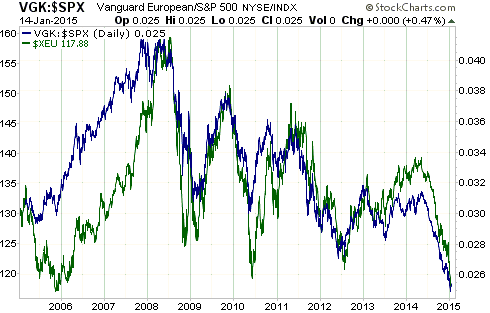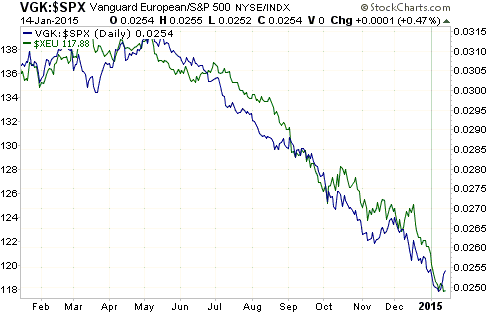In early October of last year I published an article (an excerpt from a TSI commentary) dealing with why the US$ was rallying. The point I tried to get across in this article was that rather than the main cause of the euro’s weakness — and the Dollar Index’s associated strength — being the fear that the ECB was going to stimulate (meaning: inflate the money supply) more aggressively, the main cause was the fear that the ECB would be unable to stimulate aggressively enough to sustain the bull markets in European stocks and bonds.
The argument I made at that time was based on the strong positive correlation over many years between the euro and the performance of European equities relative to US equities (as indicated by the VGK/SPX ratio). Specifically, the fact that relative strength in European equities invariably went with a rising euro and relative weakness in European equities invariably went with a falling euro implied that bullish influences on European equities would also tend to be bullish for the euro. At a time when inflation fears are low, nothing is more bullish for the broad stock market than monetary inflation.
Consequently, it was clear to me then, and it is just as clear to me now, that if the market starts to believe that the ECB will have greater ‘success’ in its efforts to pump more money, then the euro will rally on the back of relative strength in European equities.
Here are charts (one long-term and one short-term) that illustrate the relationship between currency performance and relative equity performance that I’m talking about.
 Print This Post
Print This Post


